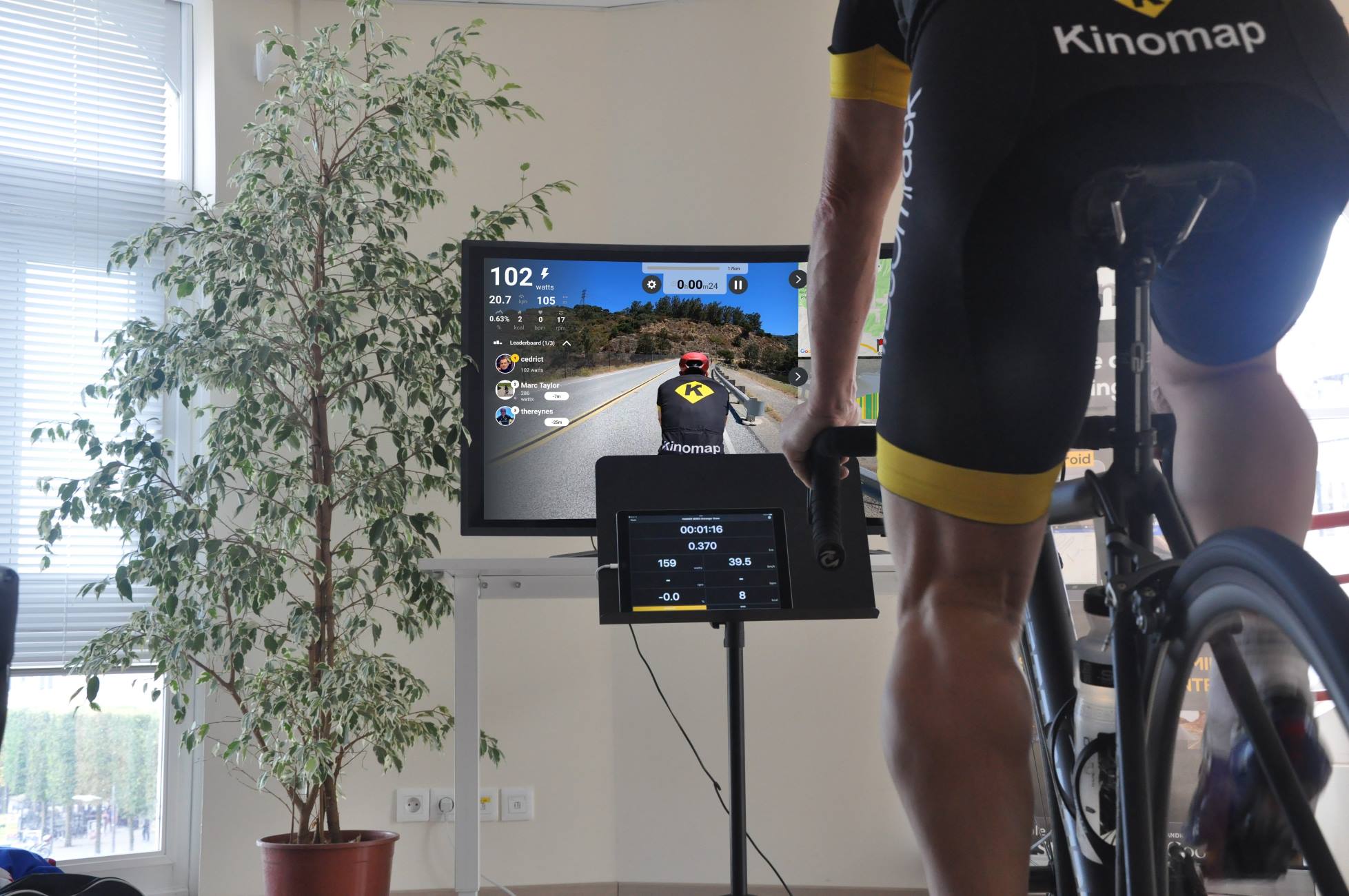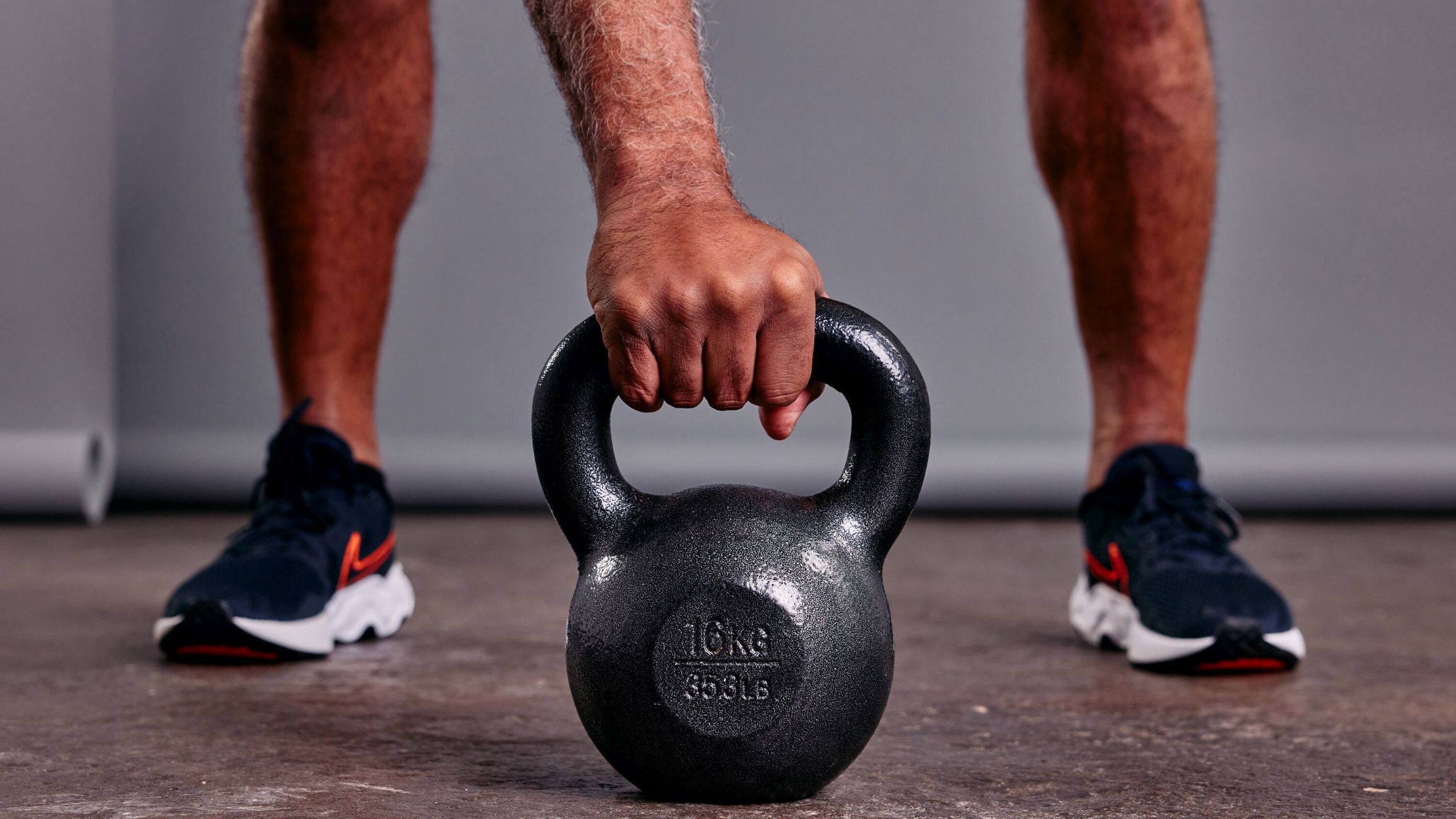Home>Training & Techniques>Cross-Training>Effective Circuit Workouts For Runners


Cross-Training
Effective Circuit Workouts For Runners
Published: February 20, 2024
Enhance your running performance with effective cross-training circuit workouts. Boost strength and endurance for better results on the track.
(Many of the links in this article redirect to a specific reviewed product. Your purchase of these products through affiliate links helps to generate commission for Therunningadvisor.com, at no extra cost. Learn more)
Table of Contents
Benefits of Circuit Training for Runners
Circuit training offers a myriad of advantages for runners, making it an invaluable addition to their training regimen. Here are the key benefits:
-
Improved Strength and Endurance: Circuit training integrates strength exercises with minimal rest between sets, effectively enhancing muscular strength and endurance. For runners, this translates to increased power and stamina, enabling them to maintain optimal performance over long distances.
-
Enhanced Cardiovascular Fitness: By incorporating high-intensity intervals, circuit workouts elevate heart rate and improve cardiovascular conditioning. This is particularly beneficial for runners, as it mimics the demands of running at varying intensities, ultimately boosting overall cardiovascular fitness.
-
Time Efficiency: Circuit training allows runners to efficiently target multiple muscle groups in a single session. This time-saving approach is especially advantageous for individuals with busy schedules, enabling them to achieve a comprehensive workout in a shorter timeframe.
-
Injury Prevention: A well-rounded circuit workout encompasses exercises that strengthen not only the major muscle groups but also the stabilizing muscles and core. This holistic approach aids in injury prevention by promoting muscular balance and stability, crucial for runners to mitigate the risk of common overuse injuries.
-
Enhanced Mental Toughness: The dynamic nature of circuit training challenges both the body and mind, fostering mental resilience and fortitude. This mental toughness cultivated during circuit workouts can significantly benefit runners, especially during grueling races and challenging training sessions.
-
Versatility and Adaptability: Circuit training can be tailored to accommodate various fitness levels and specific running goals. Whether focusing on speed, endurance, or overall strength, the versatility of circuit workouts allows for customization to meet individual needs.
-
Caloric Expenditure: The high-intensity nature of circuit training results in a significant caloric burn, contributing to weight management and overall energy expenditure. This is advantageous for runners seeking to maintain an optimal body composition and improve their running efficiency.
Incorporating circuit training into a runner's routine can yield substantial benefits, ultimately enhancing performance, reducing the risk of injury, and promoting overall well-being.
Essential Circuit Workout Equipment for Runners
When it comes to circuit training, the right equipment can significantly enhance the effectiveness of the workout, especially for runners aiming to improve their performance and endurance. Here are the essential pieces of equipment that can elevate a runner's circuit training routine:
-
Resistance Bands: These versatile bands are a valuable addition to a runner's circuit workout arsenal. They offer variable resistance, making them ideal for targeting specific muscle groups and enhancing overall strength. From lateral band walks to resisted squats, resistance bands provide a portable and effective means of incorporating strength exercises into a circuit routine.
-
Dumbbells or Kettlebells: Incorporating weighted exercises into a circuit workout can bolster muscular strength and power, essential for runners seeking to improve their performance. Dumbbells or kettlebells allow for a wide range of exercises, including lunges, overhead presses, and deadlifts, enabling runners to target multiple muscle groups and enhance overall functional strength.
-
Jump Rope: A simple yet highly effective piece of equipment, the jump rope is invaluable for integrating cardiovascular conditioning into a circuit workout. Jumping rope not only elevates heart rate but also improves coordination and agility, attributes that are beneficial for runners aiming to enhance their overall athleticism.
-
Medicine Ball: Adding a medicine ball to a circuit routine introduces dynamic and explosive movements, promoting power development and functional strength. Exercises such as medicine ball slams, throws, and twists engage the entire body, making it an excellent tool for runners looking to enhance their core strength and overall stability.
-
Plyometric Box or Step Platform: Incorporating plyometric exercises into a circuit routine can significantly improve a runner's explosive power and agility. Whether performing box jumps, step-ups, or lateral bounds, a plyometric box or step platform provides the necessary elevation for executing these high-intensity, lower-body-focused exercises.
-
Suspension Trainer: A suspension trainer, such as TRX, offers a versatile and portable means of incorporating bodyweight exercises into a circuit workout. From suspended lunges to rows and chest presses, a suspension trainer enables runners to leverage their body weight for a full-body workout, enhancing strength, stability, and muscular endurance.
By integrating these essential pieces of equipment into their circuit training routine, runners can effectively target key aspects of their fitness, including strength, power, endurance, and agility. Moreover, these tools offer versatility and adaptability, allowing for the customization of circuit workouts to align with specific running goals and individual fitness levels. Ultimately, the right equipment can elevate a runner's circuit training experience, leading to enhanced performance and overall well-being.
Sample Circuit Workout Routine for Runners
A well-structured circuit workout routine tailored specifically for runners can effectively target key aspects of their fitness, including strength, endurance, and overall athleticism. This sample circuit workout is designed to enhance a runner's performance and promote overall well-being. It incorporates a blend of strength, cardiovascular, and plyometric exercises, providing a comprehensive and dynamic training experience.
Warm-Up
- Dynamic Stretching: Perform leg swings, arm circles, and torso twists to mobilize the major muscle groups and prepare the body for the upcoming workout.
- Light Jog: Begin with a gentle 5-10 minute jog to elevate heart rate and gradually increase blood flow to the muscles.
Circuit Exercises
-
Bodyweight Squats: 3 sets of 15 reps
- Stand with feet shoulder-width apart, lower into a squat position, and return to standing, engaging the quadriceps, hamstrings, and glutes.
-
Push-Ups: 3 sets of 12 reps
- Assume a plank position, lower the body until the chest nearly touches the ground, then push back up, targeting the chest, shoulders, and triceps.
-
Jump Rope: 2 minutes
- Incorporate a 2-minute interval of continuous jump rope to elevate heart rate and engage the cardiovascular system.
-
Lunges with Dumbbells: 3 sets of 12 reps per leg
- Hold a pair of dumbbells, step forward into a lunge, and return to the starting position, targeting the quadriceps, hamstrings, and glutes.
-
Medicine Ball Slams: 3 sets of 15 reps
- Lift a medicine ball overhead and forcefully slam it to the ground, engaging the entire body and promoting power development.
-
Plank with Alternating Leg Lifts: 3 sets of 12 reps per leg
- Assume a plank position and lift one leg at a time, engaging the core and stabilizing muscles.
-
Box Jumps: 3 sets of 10 reps
- Utilize a plyometric box or step platform to perform explosive box jumps, targeting lower-body power and agility.
Cool Down
- Static Stretching: Conclude the circuit workout with static stretches targeting the major muscle groups, including the quadriceps, hamstrings, calves, and upper body.
This sample circuit workout routine for runners encompasses a balanced combination of strength, cardiovascular, and plyometric exercises, effectively addressing the specific needs of runners. By incorporating this dynamic circuit routine into their training regimen, runners can enhance their strength, endurance, and overall athletic performance, ultimately contributing to improved running efficiency and reduced risk of injury.
Tips for Maximizing the Effectiveness of Circuit Workouts
-
Prioritize Proper Form: Emphasize quality over quantity when performing circuit exercises. Maintaining proper form is crucial for maximizing the effectiveness of each movement and reducing the risk of injury. Focus on executing exercises with controlled and deliberate motions, ensuring that the targeted muscles are effectively engaged throughout the entire range of motion.
-
Customize Intensity Levels: Tailor the intensity of circuit workouts to align with individual fitness levels and specific training goals. Whether you are a novice or seasoned runner, adjusting the intensity of each exercise within the circuit can optimize the overall effectiveness of the workout. By incorporating variations in intensity, such as modifying weights, repetitions, or rest intervals, you can ensure that the circuit routine remains challenging yet manageable.
-
Strategically Sequence Exercises: Carefully plan the sequence of exercises within the circuit to maximize efficiency and minimize fatigue. Alternating between upper and lower body movements or integrating active recovery exercises between high-intensity sets can help optimize overall performance. Additionally, strategically sequencing exercises can prevent overexertion of specific muscle groups, allowing for sustained effort throughout the entire circuit.
-
Focus on Compound Movements: Prioritize compound exercises that engage multiple muscle groups simultaneously. Movements such as squats, lunges, and push-ups recruit a wide range of muscles, promoting functional strength and enhancing overall athleticism. By incorporating compound movements, runners can effectively target key muscle groups essential for optimal performance and injury prevention.
-
Mindful Breathing Techniques: Pay attention to your breathing patterns during circuit workouts. Proper breathing techniques can enhance oxygen delivery to working muscles, improving endurance and overall performance. Focus on rhythmic breathing, inhaling during the eccentric phase and exhaling during the concentric phase of each exercise, to optimize oxygen utilization and energy efficiency.
-
Incorporate Active Recovery: Integrate brief periods of active recovery between high-intensity exercises to maintain momentum and reduce muscular fatigue. Active recovery can involve low-impact movements or dynamic stretches that promote circulation and mobility while allowing for partial recovery before transitioning to the next exercise within the circuit.
-
Stay Hydrated and Fuelled: Proper hydration and nutrition are essential for maximizing the effectiveness of circuit workouts. Ensure adequate hydration before, during, and after the workout to support optimal performance and recovery. Additionally, fueling the body with a balanced pre-workout meal and post-workout nutrition can provide the necessary energy and nutrients to sustain intensity and promote muscle recovery.
-
Progressive Overload: Gradually increase the challenge of circuit workouts over time to promote continuous adaptation and improvement. Progressive overload, achieved by adjusting the intensity, volume, or complexity of the circuit routine, stimulates ongoing gains in strength, endurance, and overall fitness. By progressively challenging the body, runners can avoid plateaus and continue to experience positive adaptations from their circuit training efforts.
By implementing these tips, runners can effectively maximize the benefits of circuit workouts, enhancing their strength, endurance, and overall athletic performance. These strategies not only optimize the effectiveness of circuit training but also contribute to sustained progress and long-term success in running and fitness endeavors.
Common Mistakes to Avoid in Circuit Training for Runners
Circuit training holds immense potential for enhancing a runner's strength, endurance, and overall performance. However, certain common mistakes can hinder the effectiveness of circuit workouts and potentially lead to suboptimal results or increased risk of injury. By being mindful of these pitfalls, runners can maximize the benefits of circuit training while minimizing the likelihood of setbacks.
Overlooking Proper Warm-Up and Cool-Down
One prevalent mistake in circuit training is neglecting the importance of a comprehensive warm-up and cool-down. Failing to adequately prepare the body for the demands of the circuit workout can increase the risk of injury and compromise performance. Similarly, skipping the cool-down phase can impede recovery and contribute to post-workout muscle soreness. By incorporating dynamic stretching, light cardio, and mobility exercises in the warm-up, and static stretching and gradual cooldown activities at the end of the session, runners can optimize their readiness and recovery, thus avoiding this common mistake.
Sacrificing Form for Speed
In the pursuit of completing circuit exercises within a designated timeframe, runners may compromise proper form and technique. This can diminish the effectiveness of the workout and elevate the risk of injury. Emphasizing quality over speed is crucial in circuit training, as it ensures that targeted muscles are effectively engaged and that movements are executed with precision. By prioritizing proper form and control, runners can derive maximum benefit from each exercise while minimizing the likelihood of strain or injury.
Inadequate Rest and Recovery
Another common mistake is insufficient rest and recovery between exercises within the circuit. While the high-intensity nature of circuit training is designed to elevate heart rate and promote continuous effort, inadequate rest intervals can compromise exercise quality and overall performance. It is essential to allow adequate recovery time between sets to maintain optimal intensity and execution. By striking a balance between challenging work intervals and strategic rest periods, runners can optimize the effectiveness of their circuit workouts.
Lack of Exercise Variation
Repetitive circuit routines that lack exercise variation can lead to plateaus and reduced overall effectiveness. Failing to incorporate diverse movements and exercise modalities can limit the comprehensive development of strength, endurance, and agility. By introducing a variety of exercises that target different muscle groups and movement patterns, runners can ensure balanced muscular development and sustained progress in their training.
Ignoring Individual Fitness Levels and Limitations
Overlooking individual fitness levels and physical limitations is a common mistake that can impede progress and increase the risk of injury. Circuit training should be tailored to accommodate each runner's current fitness level, ensuring that exercises are challenging yet manageable. Failing to consider individual capabilities and limitations can lead to overexertion or inadequate stimulus, hindering the overall effectiveness of the workout.
By being mindful of these common mistakes and implementing strategies to mitigate them, runners can optimize the benefits of circuit training, enhance their performance, and reduce the likelihood of setbacks. Avoiding these pitfalls contributes to a more effective and sustainable approach to circuit training, ultimately supporting runners in achieving their fitness and performance goals.














